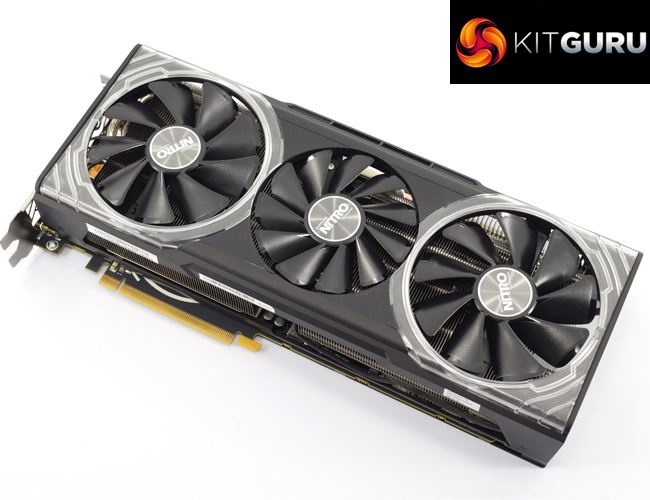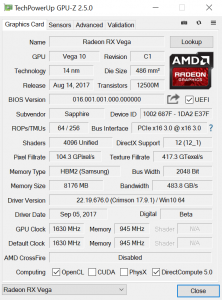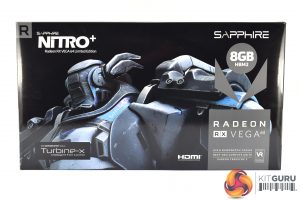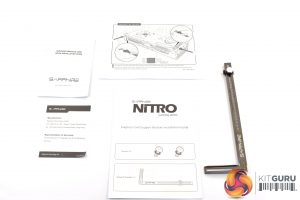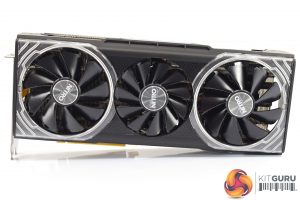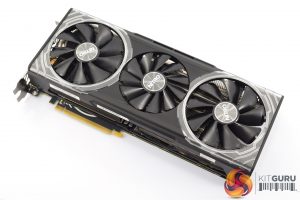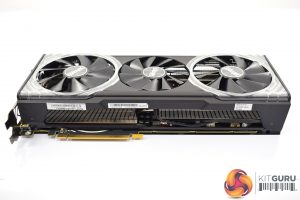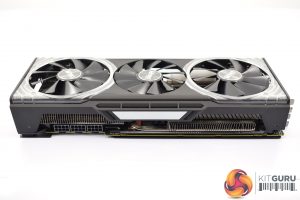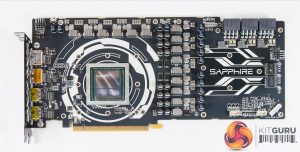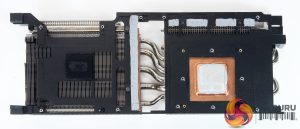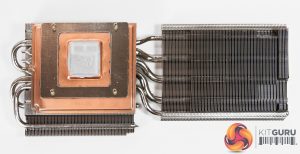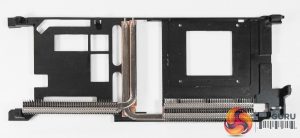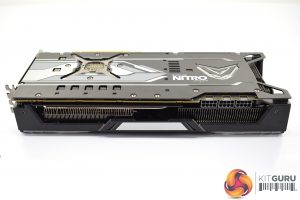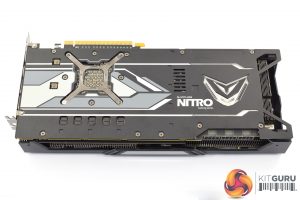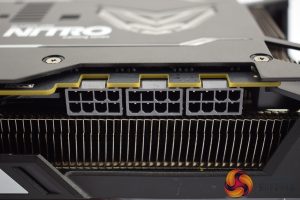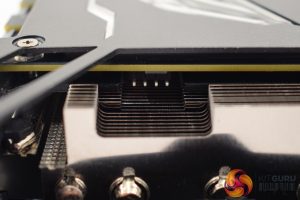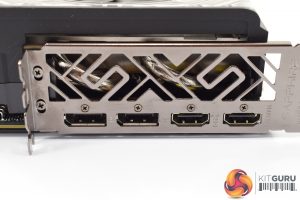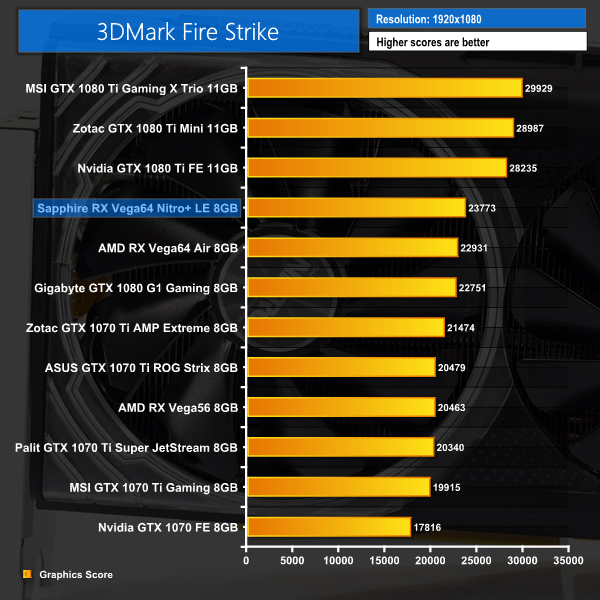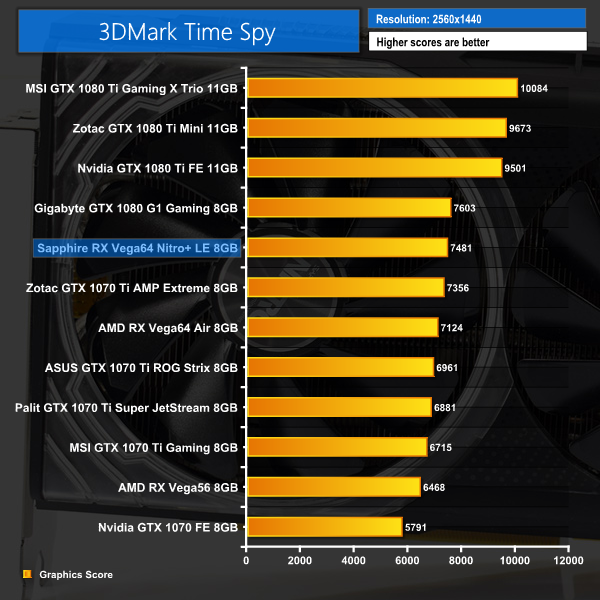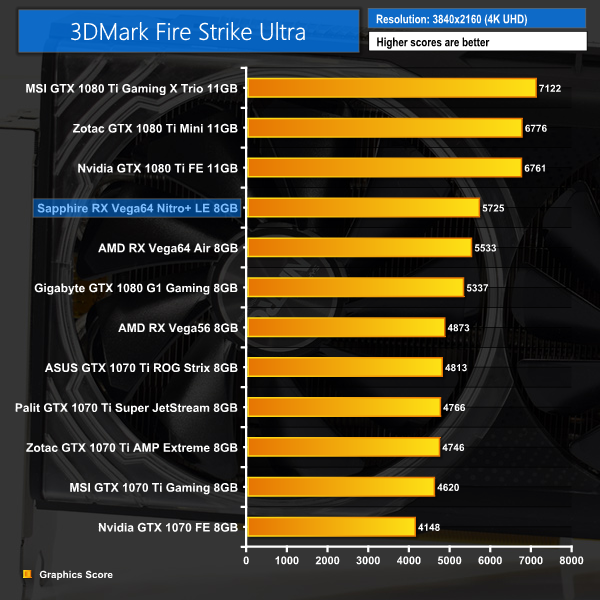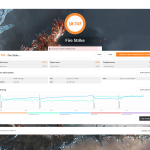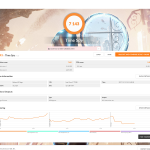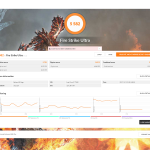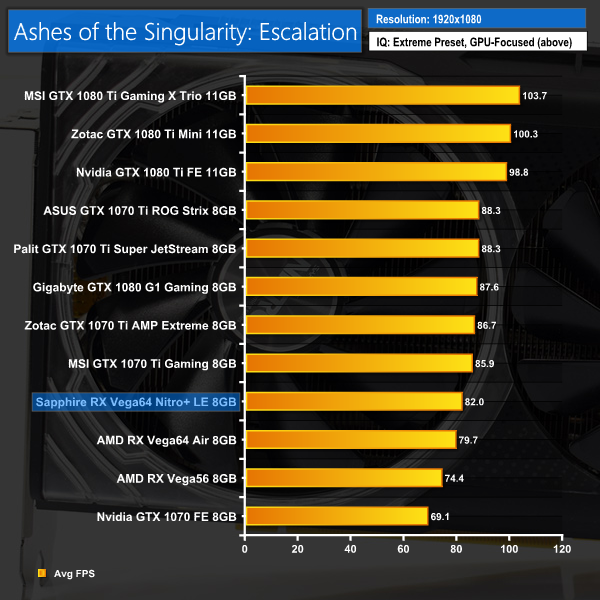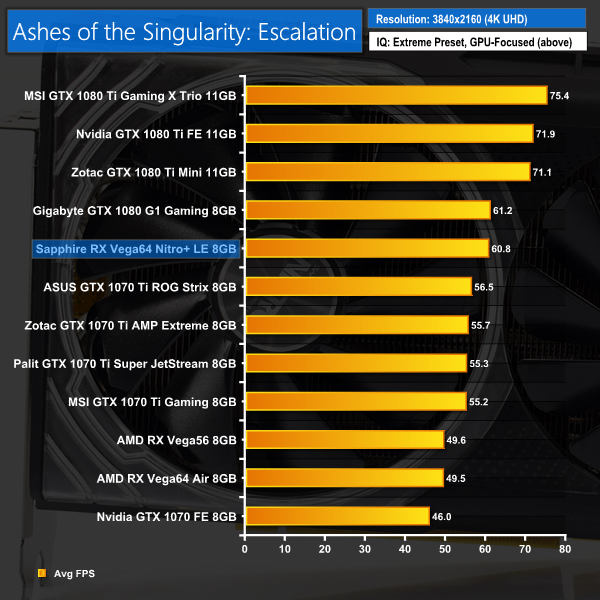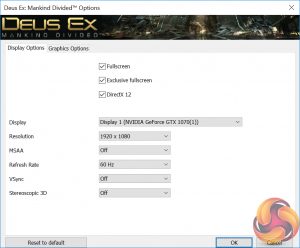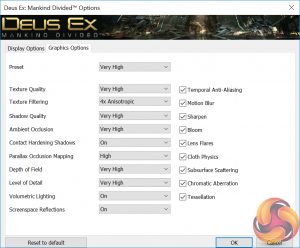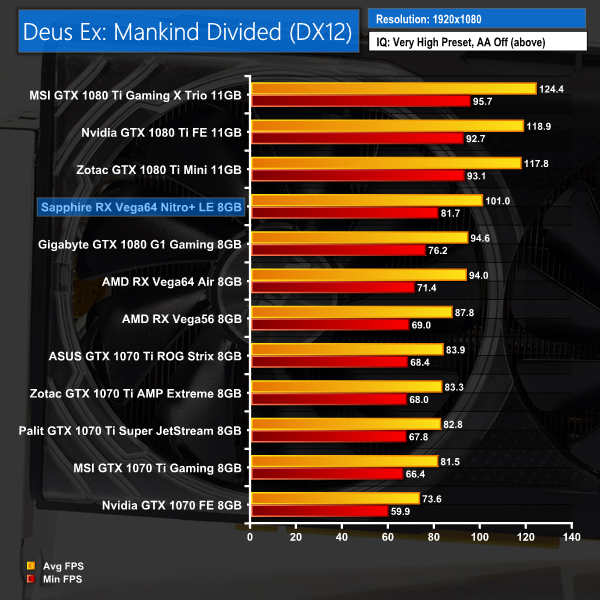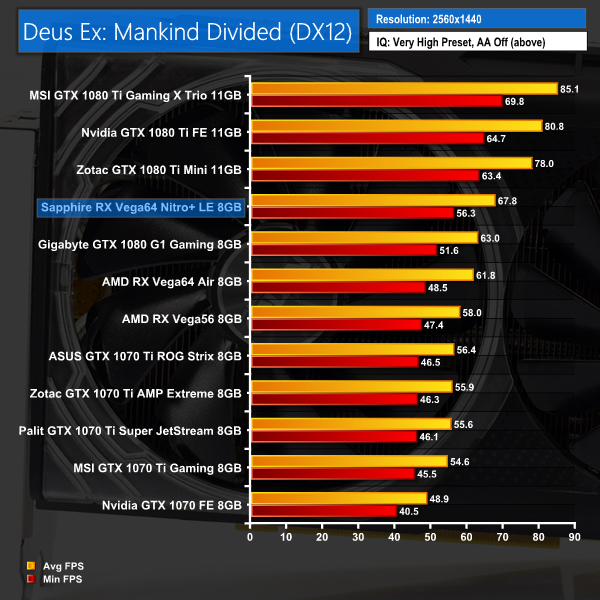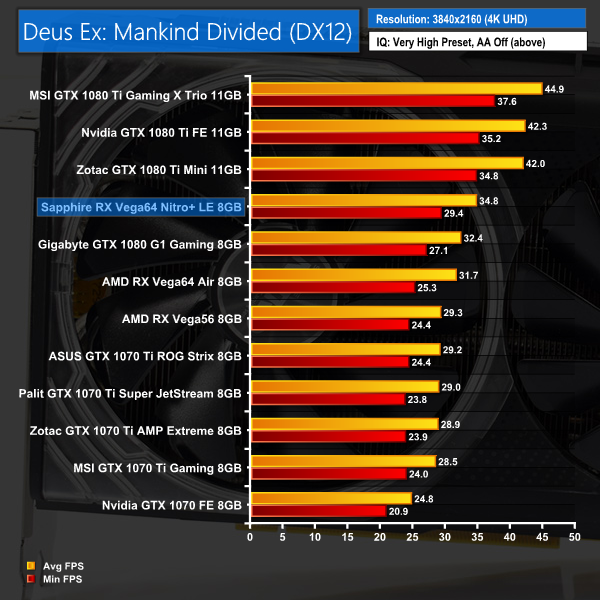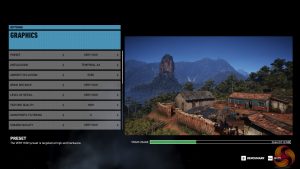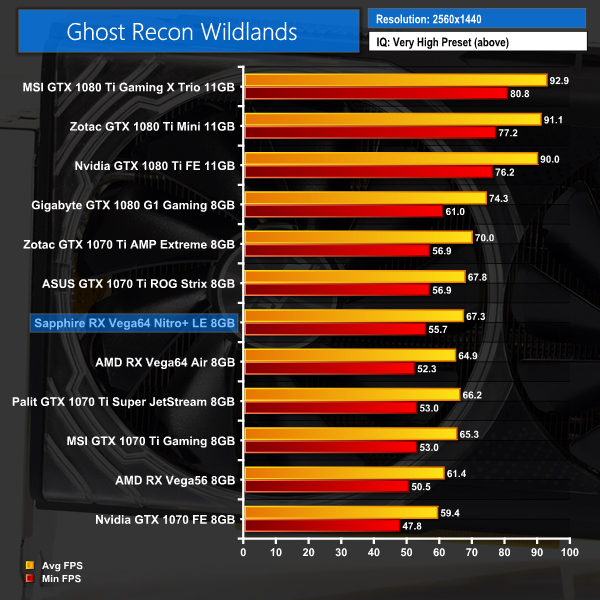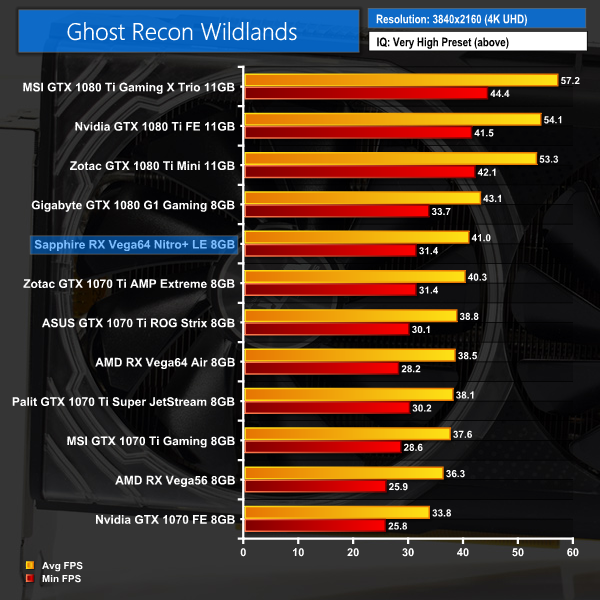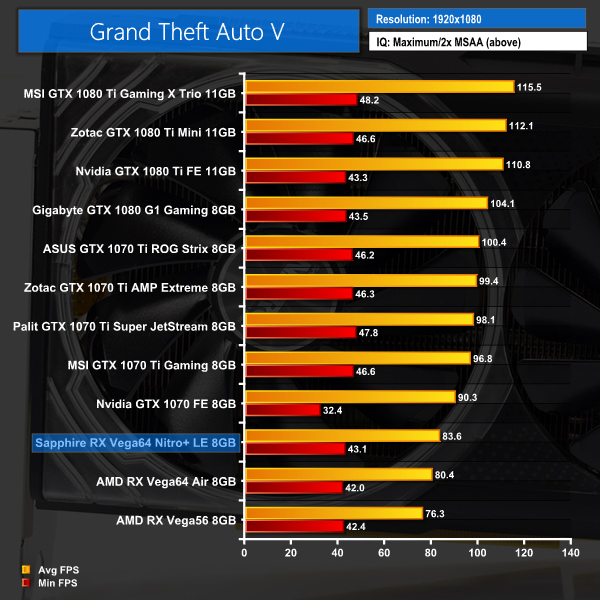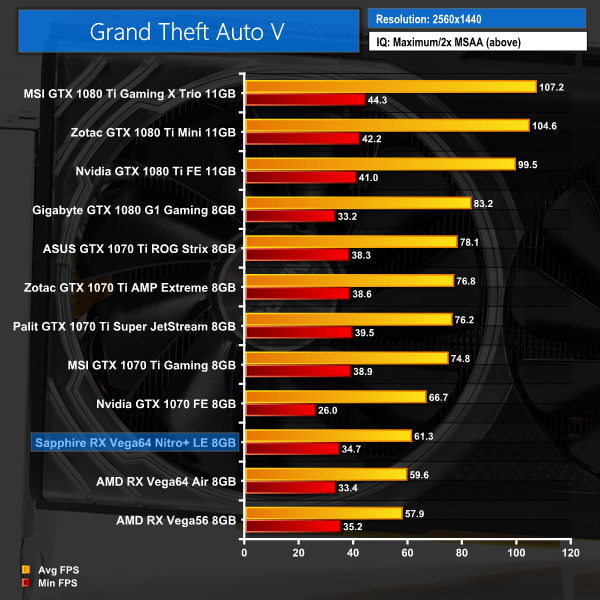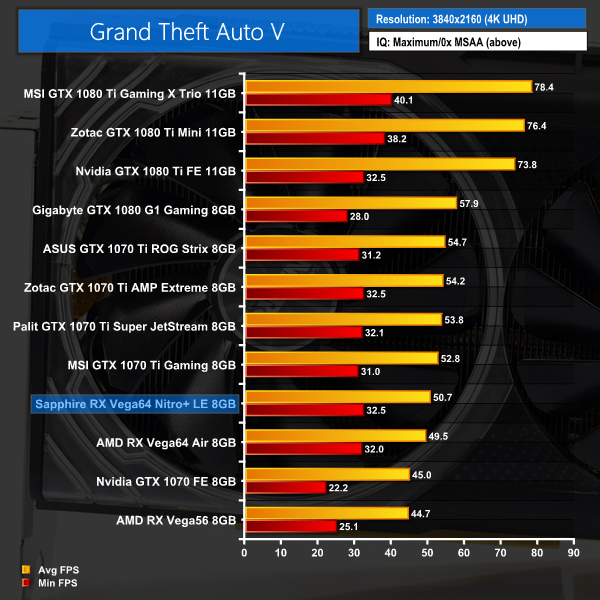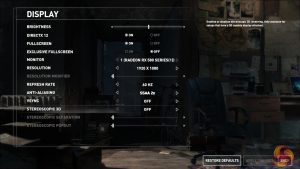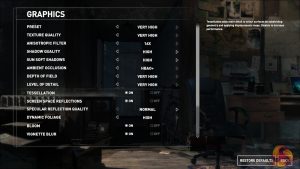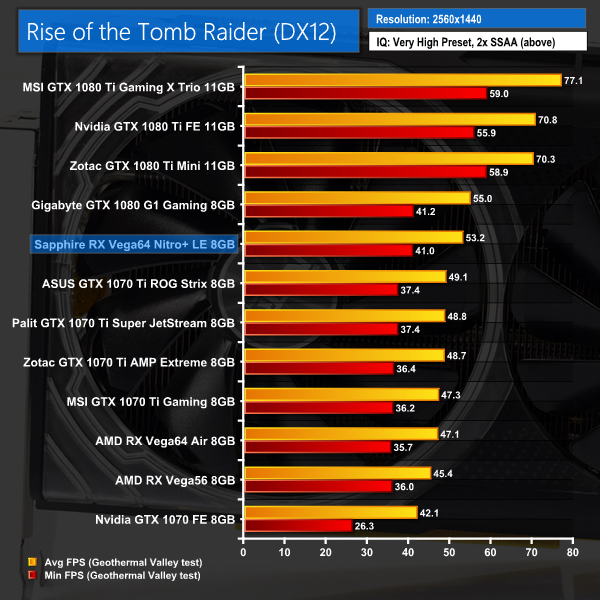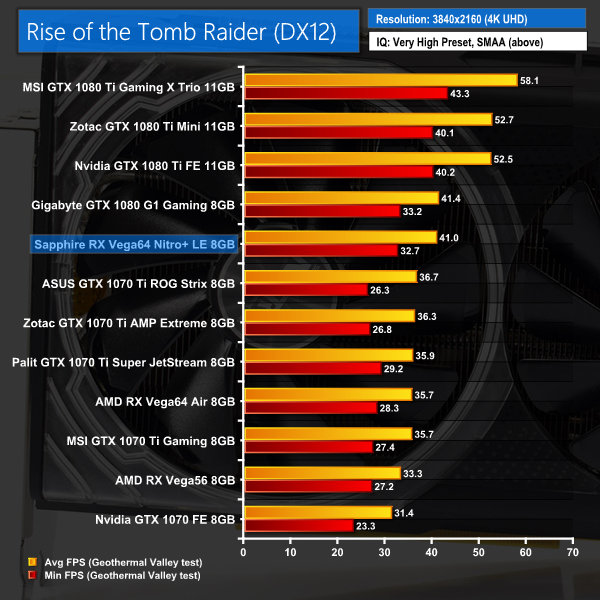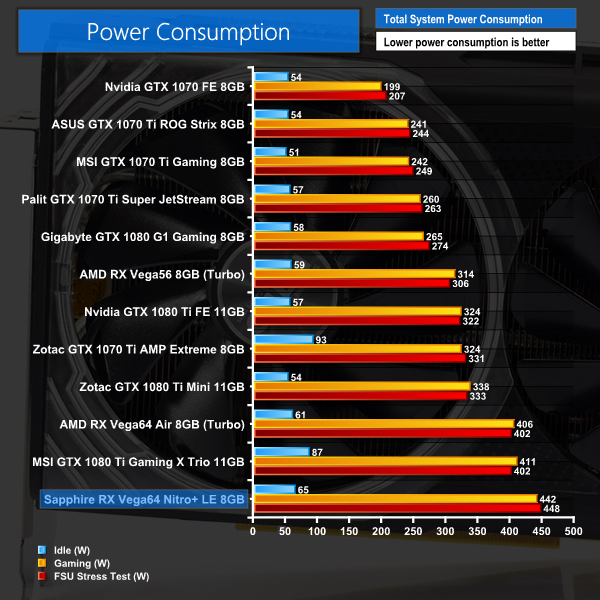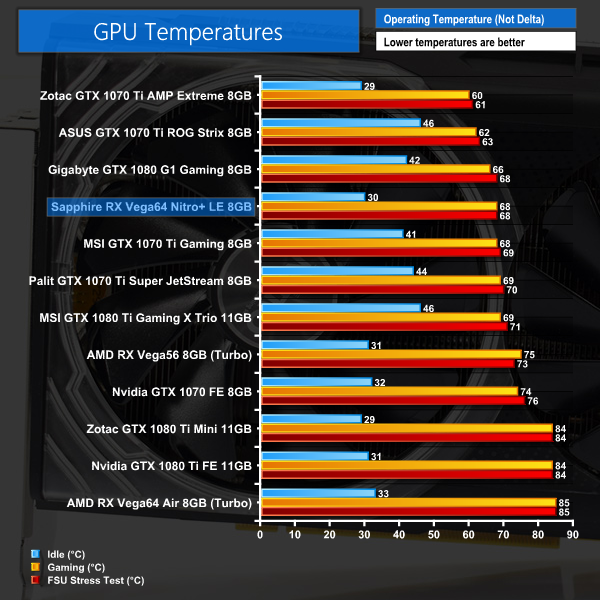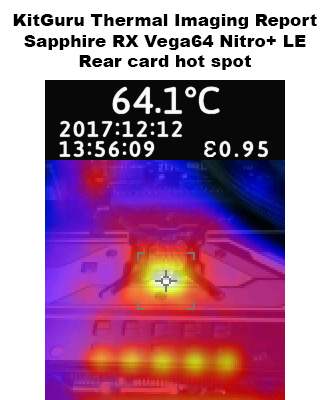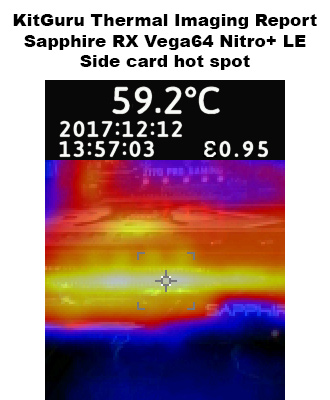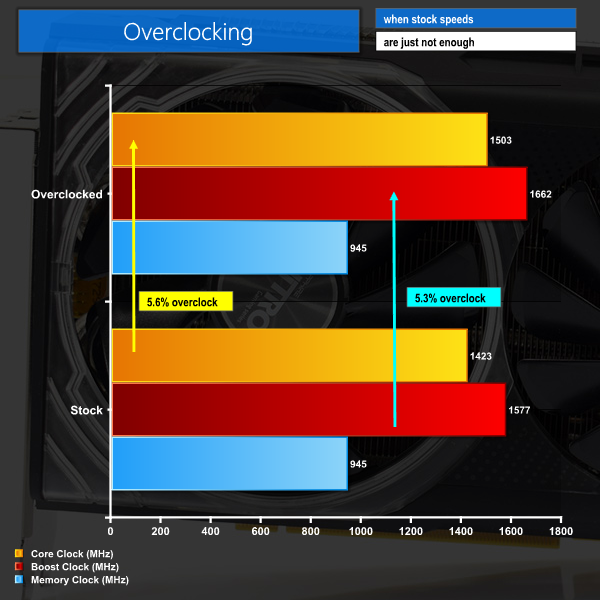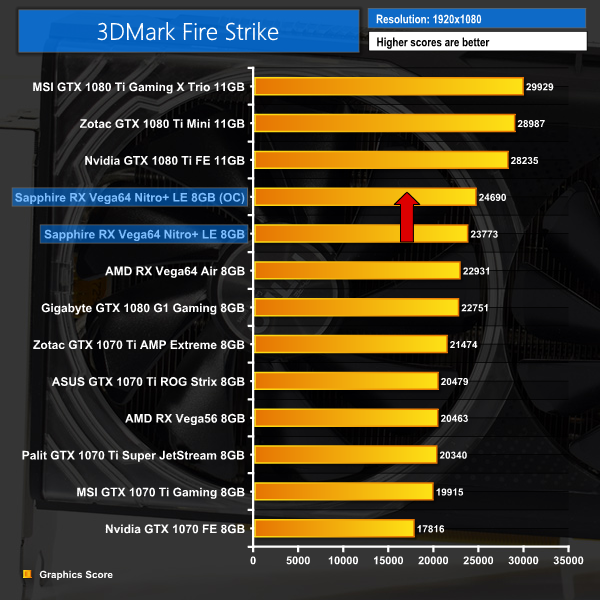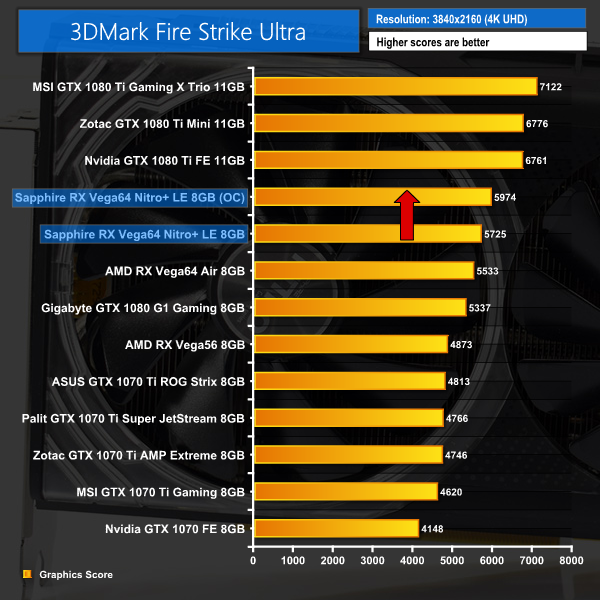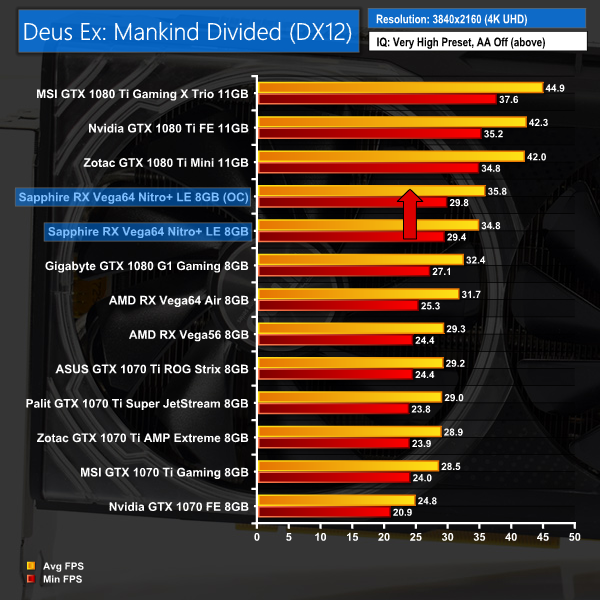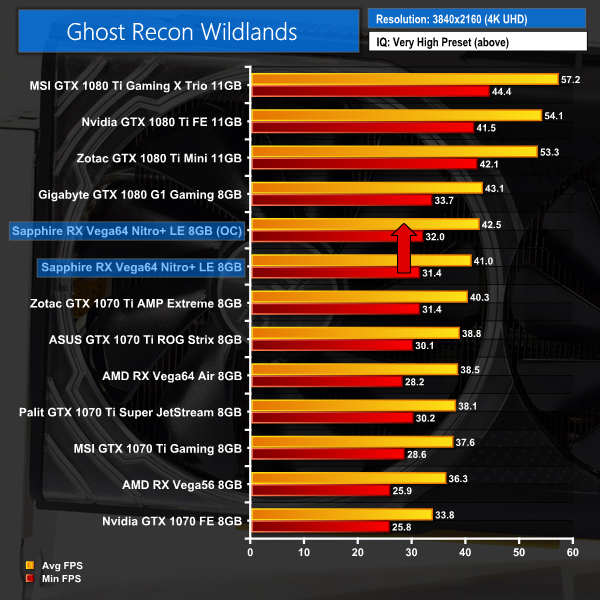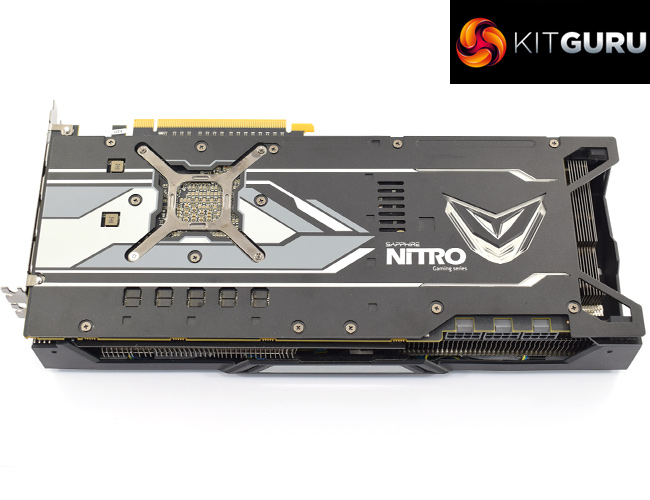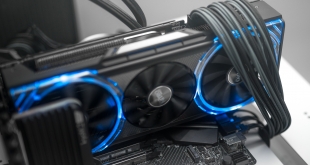
Almost four months ago to the day, AMD launched its flagship consumer graphics card: RX Vega 64. Now, after what has felt like an age, we can present our first review of an aftermarket Vega 64 card – the Sapphire Nitro+ Limited Edition model. Measuring 31cm long, and 5.4cm thick, it is nothing short of a monster. It even requires THREE 8-pin PCIe power connectors to function and comes with a support bracket to prevent GPU sag. Could this be the aftermarket card we were all hoping for when Vega 64 first launched?
With pricing still uncertain, however, we will have to see what performance boost – if any – the Sapphire RX Vega 64 Nitro+ Limited Edition can bring when compared to AMD's reference design. After all, the latter card is actually very hard to come by, and we've only found it listed online as out-of-stock.
Nvidia's GTX 1080 cards are now cheaper than ever, too, with some models starting for as little as £499.99 – and from our initial testing, we know that a GTX 1080 is the faster card. With that in mind, Sapphire definitely has its work cut-out for its Nitro+ Limited Edition card.
| GPU | AMD RX Vega64 Liquid |
AMD RX Vega64 Air |
AMD RX Vega56 | Nvidia GTX 1070 | Nvidia GTX 1080 | Nvidia GTX 1080 Ti |
| GPU Name | Vega 10 | Vega 10 | Vega 10 | GP104 | GP104 | GP102 |
| GPU Cores | 4096 | 4096 | 3584 | 1920 | 2560 | 3584 |
| Base Clock | 1406MHz | 1247MHz | 1156MHz | 1506 MHz | 1607 MHz | 1480 MHz |
| GPU Boost Clock | 1677MHz (Avg) 1750MHz (Max) | 1546MHz (Avg) 1630MHz (Max) | 1471MHz (Avg) 1590MHz (Max) | 1683 MHz | 1733 MHz | 1582 MHz |
| Total Video Memory | 8GB HBM2 | 8GB HBM2 | 8GB HBM2 | 8GB GDDR5 | 8GB GDDR5X | 11GB GDDR5X |
| Texture Units | 256 | 256 | 256 | 120 | 160 | 224 |
| Texture fill rate | 429.3 GT/s | 395.8 GT/s | 330.0 GT/s | 180.7 GT/s | 257.1 GT/s | 331.5 GT/s |
| Memory Bit Rate |
1.89 Gbps effective | 1.89 Gbps effective | 1.60 Gbps effective | 8 Gbps effective | 10 Gbps effective | 11 Gbps effective |
| Memory Bandwidth | 484 GB/s | 484 GB/s | 410 GB/s | 256.3 GB/s | 320 GB/s | 484 GB/s |
| Bus Width | 2048-bit | 2048-bit | 2048-bit | 256-bit | 256-bit | 352-bit |
| ROPs | 64 | 64 | 64 | 64 | 64 | 88 |
| Manufacturing Process | 14nm | 14nm | 14nm | 16nm | 16nm | 16nm |
| TDP | 345 W | 295 W | 210 W | 150 W | 180 W | 250 W |
| Power Connector(s) | 2x 8-pin | 2x 8-pin | 2x 8-pin | 1x 8-pin | 1x 8-pin | 1x 6-pin + 1×8-pin |
| Launch MSRP | $699 (Radeon Aqua Pack) | $499 | $399 | $449 (FE) | $699 (FE) | $699 |
| Pricing (Dec 2017) |
Approx £670+ | Approx £540+ | Approx. £530+ | Approx. £380 | Approx. £499 | Approx. £680 |
The Sapphire RX Vega 64 Nitro+ Limited Edition card ships in a black box, with a large robotic figure placed on the front.
Inside there are four pieces of documentation as well as the support bracket to prevent any unwanted sagging.
Getting our first look at the card, it is definitely a looker. The black shroud contrasts beautifully against the clear plastic sections which house the card's RGB LEDs, while even the three fans' size differences (two 100mm, one 90mm) is visually appealing.
It is a huge piece of kit though. Sapphire has its dimensions listed as 310 x 133 x 54mm, while it is also a two-and-a-half slot card – so definitely check to make sure it can fit in your chassis before buying one.
‘naked' Images above courtesy of Sapphire
Now, moving onto the PCB and heatsink, we actually had to borrow the above images from Sapphire itself – something we do not usually do. The reason for this is that Sapphire actually asked us not to remove the card's heatsink, for the simple reason that doing so would interfere with their specially manufactured thermal paste – so if we tampered with the card here, it would affect whoever used it next.
Making do with Sapphire's images, though, we can see the custom PCB is quite something. It features a whopping 14 phase power delivery design, and it looks like each inductor actually has its own mini-heatsink to help aid heat dissipation. Even the PCB itself sports a lovely black and white design which is a lovely touch.
As for the heatsink, that sports 3x 8mm heatpipes, as well as another 3x 6mm heatpipes to cool the GPU core. There are also two more 6mm heatpipes specifically designed to cool the VRMs. It is certainly an impressive piece of engineering.
Elsewhere, the backplate is very tasteful thanks to its colour-neutral design that looks really good without causing a headache for anyone with a colour-coordinated system. On the right-hand side of the card's rear, there is more RGB lighting positioned in the Vega logo.
On the side of the Nitro+ LE, we find the required PCIe power connectors: three 8-pin plugs, no less. This is quite something, and I can't remember the last time I saw a mainstream GPU with three 8-pin PCIe power connectors required. Later on in the review we do assess power consumption, so I won't spoil that for you here.
Moving over to the end of the card, sandwiched between the heatsink fin array and backplate we find a solitary 4-pin fan header. Like various ASUS Strix models we have seen over the last year, this allows you to control one of your case fans via the GPU temperature, as opposed to CPU temperature as per a motherboard fan header.
Lastly, display outputs are as follows: 2x DisplayPort 1.4, 2x HDMI 2.0b. This is one extra HDMI over reference, something Sapphire changed with VR headsets in mind.Our newest GPU test procedure has been built with the intention of benchmarking high-end graphics cards. We test at 1920×1080 (1080p), 2560×1440 (1440p), and 3840×2160 (4K UHD) resolutions.
We try to test using the DX12 API if titles offer support. This gives us an interpretation into the graphics card performance hierarchy in the present time and the near future, when DX12 becomes more prevalent. After all, graphics cards of this expense may stay in a gamer’s system for a number of product generations/years before being upgraded.
We tested the RX Vega64 and Vega56 using the ‘Turbo‘ power mode in AMD’s WattMan software. This prioritises all-out performance over power efficiency, noise output, and lower thermals.
Driver Notes
- AMD Graphics cards were benchmarked with the AMD Crimson ReLive 17.9.1 driver.
- Nvidia Graphics cards, not including GTX 1070 Ti cards, were benchmarked with the Nvidia 384.94 driver.
- GTX 1070 Ti cards were benchmarked with the Nvidia 388.09 driver.
Test System
| CPU |
Intel Core i7-7700K ‘Kaby Lake’ (Retail)
Overclocked to 4.8GHz Core |
| Motherboard |
ASUS Z170 Pro Gaming
|
| Memory |
Geil Evo X
16GB (2x8GB) @ 3200MHz 16-16-16-36 |
| Graphics Card |
Varies
|
| System Drive |
Sandisk SSD PLUS 120GB
|
| Games Drive | Crucial M4 512GB |
| Chassis | Game Max Moonstone (high fan speed) |
| CPU Cooler |
Fractal Design Celsius S24
|
| Power Supply |
Seasonic Prime 1000W Platinum
|
| Operating System |
Windows 10 Professional with Creators’ Update (64-bit)
|
Our test system consists of an overclocked Core i7-7700K processor and 16GB of 3200MHz Geil DDR4. High-end hardware is used to eliminate CPU and memory from the bottleneck equation and put the performance onus solely on the GPU being tested.
Comparison Graphics Cards List
AMD Radeon RX Vega64 Air (1247MHz core / 1546MHz average boost / 1.89Gbps HBM2 memory)
AMD Radeon RX Vega56 Air (1156MHz core / 1471MHz average boost / 1.6Gbps HBM2 memory)
Nvidia GTX 1080 Ti Reference (1480MHz core / 1582MHz boost / 11Gbps GDDR5X memory)
Zotac GTX 1080 Ti Mini (1506MHz core / 1620Mhz boost / 11Gbps GDDR5X memory)
MSI GTX 1080 Ti Gaming X Trio (1569MHz core / 1683MHz boost / 11Gbps GDDR5X memory)
Gigabyte GTX 1080 G1 Gaming (1696MHz core/ 1835MHz boost / 10Gbps GDDR5X memory)
MSI GTX 1070 Ti Gaming 8G (1607MHz core / 1683HMz boost / 8Gbps GDDR5)
Palit GTX 1070 Ti Super JetStream (1607MHz core / 1683HMz boost / 8Gbps GDDR5)
ASUS GTX 1070 Ti ROG Strix (OC Mode) (1683MHz core / 1759MHz boost / 8Gbps GDDR5)
Zotac GTX 1070 Ti AMP Extreme (OC Mode) (1757MHz core / 1833MHz boost / 8Gbps GDDR5)
Nvidia GTX 1070 Founders Edition (1506MHz core/ 1683MHz boost / 8Gbps GDDR5 memory)
Software and Games List
- 3DMark Fire Strike & Fire Strike Ultra (DX11 Synthetic)
- 3DMark Time Spy (DX12 Synthetic)
- Ashes of the Singularity: Escalation (DX12)
- Deus Ex: Mankind Divided (DX12)
- Ghost Recon Wildlands (DX11)
- Grand Theft Auto V (DX11)
- Rise of the Tomb Raider (DX12)
3DMark Fire Strike is a showcase DirectX 11 benchmark designed for today’s high-performance gaming PCs. It is our [FutureMark’s] most ambitious and technical benchmark ever, featuring real-time graphics rendered with detail and complexity far beyond what is found in other benchmarks and games today.
Sapphire's Nitro+ Vega 64 starts off very well in our synthetic set of benchmarks. It is consistently faster than reference Vega 64 across all three tests, with the difference being almost 1000 points in Fire Strike.Ashes of the Singularity: Escalation is a real-time strategy game set in the future where descendants of humans (called Post- Humans) and a powerful artificial intelligence (called the Substrate) fight a war for control of a resource known as Turinium.
Players will engage in massive-scale land/air battles by commanding entire armies of their own design. Each game takes place on one area of a planet, with each player starting with a home base (known as a Nexus) and a single construction unit.
We opt for the Extreme quality profile and run the GPU-Focused test using the DX12 game mode.
It is when testing Ashes, particularly at 1440p and 4K, that we really see the Nitro+ card really stretch its legs – at both of those resolutions, the Sapphire card delivers at least 8 more frames on average than reference Vega 64.Deus Ex: Mankind Divided is set in the year 2029, two years after the events of Human Revolution and the “Aug Incident”—an event in which mechanically augmented humans became uncontrollable and lethally violent. Unbeknownst to the public, the affected augmented received implanted technology designed to control them by the shadowy Illuminati, which is abused by a rogue member of the group to discredit augmentations completely. (Wikipedia).
The Very High preset was used for 1080P, 1440P, and 4K. We used the DirectX 12 API.
Deus Ex has always favoured AMD hardware, so it is no surprise to see the Nitro+ perform brilliantly in this test. At 1080p, the Sapphire card delivered an extra 7 FPS on average when compared to the reference card – not bad at all.Tom Clancy’s Ghost Recon: Wildlands is an open world tactical shooter video game developed by Ubisoft Paris. It is the tenth instalment in the Tom Clancy’s Ghost Recon franchise and is the first Ghost Recon game to feature an open world environment.
We run the built-in benchmark using the Very High quality preset at 1080P, 1440P, and 4K.
Wildlands does show smaller gains for the Nitro+ card when compared with AMD's reference design, although the gap at 1440p is still just under 6 FPS – not to be sniffed at.Grand Theft Auto V is an action-adventure game played from either a first-person or third-person view. Players complete missions—linear scenarios with set objectives—to progress through the story. Outside of missions, players may freely roam the open world.
Composed of the San Andreas open countryside area and the fictional city of Los Santos, the world is much larger in area than earlier entries in the series. It may be fully explored after the game’s beginning without restriction, although story progress unlocks more gameplay content.
We use the Ultra quality settings (or the highest alternative – generally Very High or High – when Ultra is unavailable). MSAA is set to 2x for 1080p and 1440p and is disabled for 4K. The Advanced Graphics options are all set to their maximum levels.
GTA V has typically been less favourable to AMD hardware than the other four games on test today, and that trend is on display here. The Nitro+ Vega 64 is actually slower than Nvidia's GTX 1070 at 1080p and 1440p resolutions, while it only nudges ahead at 4K.Rise of the Tomb Raider is a third-person action-adventure game that features similar gameplay found in 2013’s Tomb Raider. Players control Lara Croft through various environments, battling enemies, and completing puzzle platforming sections, while using improvised weapons and gadgets in order to progress through the story.
It uses a Direct X 12 capable engine.
At 1080p and 1440p, we use the Very High quality preset and 2x SSAA. At 4K we use SMAA. The DirectX 12 API is used. Numbers are taken from the benchmark’s Geothermal Valley test.
In ROTTR the Nitro+ Vega 64 really closes the gap on Nvidia's GTX 1080, coming within 0.4 FPS of it at 4K. The gap is wider at 1080p, as expected, but Sapphire's card is definitely competitive across all three resolutions.We first measure system-wide power draw from the wall while the card is sat idling at the Windows 10 desktop for 5 minutes. Gaming power draw is recorded by running the Deus Ex benchmark at 4K. As a maximum stress test, Fire Strike Ultra Stress Test is run 5 consecutive times and the cards’ power draws are recorded.
As you probably guessed, adding an extra 8-pin PCIe power connector doesn't exactly help with power consumption, and the Nitro+ draws about 40 Watts more than AMD's reference Vega 64.
That's enough to make it the most power-hungry card on-test today, and a decent power supply is definitely required. Sapphire actually recommends an 850W PSU for their Nitro+ card, so bear that in mind.We first measure GPU temperature while the card is sat idling at the Windows 10 desktop for 5 minutes. Gaming GPU temperature is recorded by running the Deus Ex benchmark at 4K. As a maximum stress test, Fire Strike Ultra Stress Test is run 5 consecutive times and the cards’ GPU temperature levels are recorded.
Ambient room temperature was held at around 23°C.
Considering AMD's reference Vega 64 card has a temperature target of 85C, it is quite impressive to see Sapphire's Nitro+ card peak at 68C under load – be it gaming or looping Fire Strike Ultra. That hefty heatsink and triple-fan configuration obviously reaps dividends.
Moving onto our thermal imaging, the hot spot on the rear of the card is directly behind the GPU core. However, this particular spot peaked at just over 64C, which is perfectly fine.
The side of the card stayed even cooler, at just under 60C, which is another fabulous result.We take our noise level measurements with the decibel meter on the top and middle section of the case, overhanging the side panel (power supply side, not motherboard tray side) by exactly 1 inch to avoid any airflow pressure coming from the exhausting AIO cooler.
I measured the sound floor to be 34 dBA, thus anything above this level can be attributed to the graphics cards. The power supply is passive for the entire power output range we tested all graphics cards in, while all CPU and system fans were disabled.
Noise levels were measured after 5 minutes under three scenarios: desktop idle, Deus Ex: Mankind Divided at 4K, and the Fire Strike Ultra stress test.
Starting with noise levels under load, Sapphire's card isn't the quietest around – but compared to AMD's reference design it is a vast improvement. In any case, it isn't the loudest aftermarket card we've ever tested, so it wouldn't be fair to be overly critical here, but you do get lower noise emissions with a GTX 1080 or 1070 Ti.
Idle noise levels are interesting, however, as Sapphire does advertise a ‘fan stop' mode when the GPU core is below a 55C threshold. However, the fans wouldn't turn off with my card and stayed at a constant 21% while idling, resulting in the slight noise bump at idle.
We did get in contact with Sapphire about this – as the fans should not spin under 55C – and we were told that it is a known driver issue, as AMD's drivers can occasionally interfere with a card's fan curve. We can expect a fix in the near future.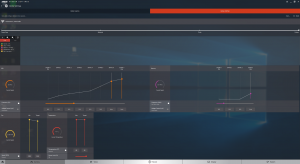
While Sapphire will have a new version of its GPU tweak software – named TriXX – ready soon, it was not available before launch so we settled for using AMD‘s WattMan software to overclock the graphics card.
Here, our best result came with fans set to 100%, the power limit set to +50 (its maximum value) and GPU frequency set to +5%.
These parameters gave an added 80MHz or so in the real world, with the boost frequency settling at about 1662MHz – up from 1577MHz at stock settings.
This overclock didn't have the biggest effect – a couple of FPS at best really. To my mind, it wasn't worth the extra noise but there are always some who want maximum performance at all costs.The first aftermarket Vega 64 card to come through our labs, the Sapphire RX Vega 64 Nitro+ Limited Edition is undoubtedly a great improvement over the reference card.
It delivered faster frame rates across the board when compared to the reference Vega 64, thanks to its ability to hold its boost clock at consistently higher frequencies. Where our reference card would flit between 1400 and 1500MHz, the Nitro+ held steady at around 1570MHz right out of the box.
That extra performance does come at the cost of increased power consumption, though that is not really surprising when we remember that this card has a whopping three PCIe power connectors, something which is almost unheard of in this modern era of efficient GPUs.
The actual card itself is very good-looking, though, with a lovely monochrome backplate that adds some interest without causing an issue for those with colour-coordinated systems. It is massive, though, measuring 310 x 133 x 54mm, so it is perhaps not a card for any Mini-ITX system builders out there.
Sapphire's three fan cooling configuration provides excellent results, too, as we saw a peak temperature of just 68C for the Nitro+, using AMD ‘Turbo' profile no less. The card isn't as quiet as other GTX 1080 or 1070 Tis we have tested recently, but it isn't raucous either so we were happy enough with overall noise emissions.
The main problem for the Nitro+ comes when we consider pricing and the card's competition. Sapphire hasn't yet told us a firm price for the Nitro+, but based on current pricing for other aftermarket Vega 64 cards, it is hard to see it costing less than £650.
That is obviously a big problem for Vega 64 when we consider the fact that GTX 1080s can be had for as little as £499.99. The obvious question is, then, why would anyone buy a Vega 64 card when it is slower, more power-hungry and about £150 more expensive?
And the fact is, I struggle to answer that question. There is a slight possibility that someone who saved a decent bit of cash by going for a FreeSync monitor (instead of a G-Sync one) may consider buying Vega, but even then, a GTX 1080 will still output more FPS for less money. It's certainly a very difficult time for any AMD fans out there.
All-in-all, the Sapphire RX Vega 64 Nitro+ Limited Edition is undoubtedly a fine aftermarket Vega 64 card, delivering significantly better performance and lower temperatures than the reference design. If you simply must have an AMD graphics card in the high end, you will get no better and its worth considering. However, pricing is just not competitive at all – for £150 less, a GTX 1080 will give you better performance, making it a no-brainer unless you really must have FreeSync support for your monitor.
We don't yet have pricing or availability confirmed for the Nitro+, but we will update this review with a buy link when we have one.
Update 16/12/17: The Nitro+ is available from Overclockers UK for £749.99 HERE.
Pros
- Significantly faster than reference Vega 64.
- GPU core peaks at just 68C.
- Good-looking card with a colour-neutral design.
- Would work well with a 1080p or 1440p FreeSync monitor.
Cons
- Costs more than GTX 1080 – despite being slower and more inefficient.
- Very power-hungry and requires three 8-pin PCIe power connectors.
KitGuru says: While we are waiting for firm pricing and availability information from Sapphire, Vega 64 is a very tough sell at the minute – no matter how good the aftermarket card, GTX 1080s can be found for significantly less money while offering increased performance and efficiency. Even the lure of FreeSync support is not enough to justify the extra cost – ultimately, the price-to-performance ratio is just not good enough.
Be sure to check out our sponsors store EKWB here
 KitGuru KitGuru.net – Tech News | Hardware News | Hardware Reviews | IOS | Mobile | Gaming | Graphics Cards
KitGuru KitGuru.net – Tech News | Hardware News | Hardware Reviews | IOS | Mobile | Gaming | Graphics Cards


